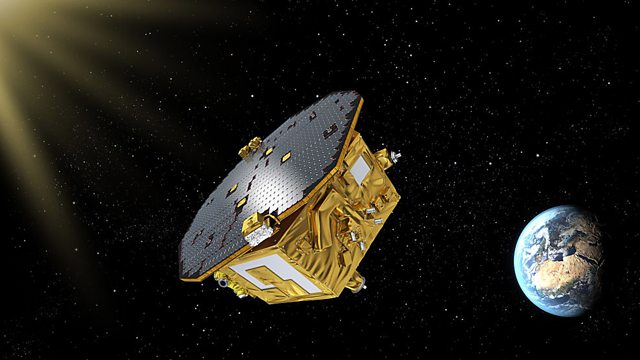
What's the Future for Gravitational Wave Detection?
Gravitational waves; Social media and depression; Lucy Fell from Tree; The Oldest Life on Earth; The Psychic Tear; Moment Allows Navigation on Your Skin
About to be switched back on, LIGO, the Laser Interferometer Gravitational Wave Observatory, led to the momentous detection of gravitational waves. These are mysterious ripples in space generated from the collision of two black holes. The European equivalent - VIRGO is also being upgraded. And there is still talk of LISA – a gravitational wave detector in space. So what does the future hold in gravitational wave research?
Social Media and Depression
Could the photos you post on the social media app Instagram reveal early warning signs that you may be at risk of depression? Post-graduate researcher Andrew Reece from Harvard University thinks they might. He persuaded 166 people with a history of depression to give him access to the 43,000 photos on their Instagram feeds. Then he developed a computer programme to analyse the pictures and found they did differ from the photos other people posted. Whilst he does not think it could ever replace a doctor’s medical diagnosis, Reece believes with more work, this could provide users and medical staff with a useful tool to help predict who might be at risk of developing depression. Claudia Hammond finds out more.
Lucy Fell from Tree
Lucy was a hominin - Australopithecus afarensis - an early human species, who died over 3 million years ago. With 40% of her fossilised bones recovered, scientists have been examining them to learn more about her life and death. A recent, highly detailed, CT scan has revealed some surprising results, Lucy could have died from falling out of a tree. Professor John Kappelman, from the University of Texas at Austin talks to Marnie Chesterton.
The Oldest Life on Earth
Snow on Isua Supercrustal Belt in Greenland has melted to reveal something quite unexpected. Scientists think the uncovered rock could contain signs of very early life, dating back to as far as 3.7 billion years ago. The evidence is thought to represent stromatolite fossils, the longest-lived lifeforms made up of sediment and bacterial growths. The work suggests that life might have formed 200 million years earlier than we previously thought. Geologist Professor Martin Van Kranendonk talks to Marnie Chesterton.
The Psychic Tear
Drs Adam Rutherford and Hannah Fry answer the question, why do we cry. Hannah discovers how the eye produces tears, with the help of Dr Nick Knight. We hear how Charles Darwin experimented on his children until they cried. And Adam watches a tearjerker to take part in a psychological study, but it does not reduce him to tears.
Moment Allows Navigation on Your Skin
Moment is a wristband that traces your GPS direction on your skin. Instead of having to rely on your smartphone for navigation, it suggests the direction to take via a signal on your wrist. Gareth Mitchell talks to the key researcher of the gadget, Shantanu Bala.
(Photo caption: In this undated handout photo provided by the European Space Agency, an artist's impression shows the LISA Pathfinder orbiting over the Earth © ESA via Getty Images)
The Science Hour was presented by Roland Pease with comments from ����ý Science Correspondent Jonathan Amos
Editor: Deborah Cohen
Last on
More episodes
Previous
Broadcasts
- Sat 3 Sep 2016 08:06GMT����ý World Service Australasia
- Sat 3 Sep 2016 22:06GMT����ý World Service except News Internet
- Sun 4 Sep 2016 01:06GMT����ý World Service Australasia
- Mon 5 Sep 2016 05:06GMT����ý World Service South Asia
Podcast
-
![]()
Unexpected Elements
The news you know, the science you don't

